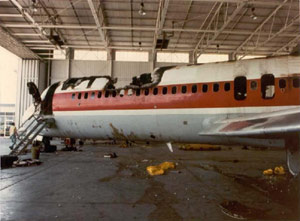
21 Sep Fires in high-flying planes
Almost 45,000 flights are handled by air traffic control daily, out of these flights – only a rare couple experience any issues, and those issues are minor by nature.
However, a fire at 100,000 kilometres in the sky, in a pressurized cabin with limited oxygen, can quickly evolve into a full-blown disaster scenario, with over a hundred lives on the line.
In 1985, a fire which began in the laboratory of Air Canada Flight 797, swallowed oxygen and spread along the skin and inner decor patterns of a plane, filling a plane with toxic smoke. The instrumentation in the cockpit was rendered useless as a result of the fire burning through electrical wires.
At the time of the emergency stop at Toronto Pearson International Airport, passengers on board were struggling with choking oxygen – when the doors opened, the influx of fresh oxygen, mixing with the trapped heat of the fire, led to flashover conditions – which killed 23 people.
What is a Flashover?
A flashover is a near-simultaneous ignition of exposed combustible materials, as a result of an influx of heat which brings gasses and surfaces to their autoignition temperatures, as the surface of the combustible material is destroyed, it releases further gasses which are then ignited as part of a chain reaction.
The most common example is a lean flashover, which occurs when gas is trapped inside a ceiling. The gas ignites trapped in the pressurised space, igniting the whole of the compartment from the ceiling down in a chain reaction.






